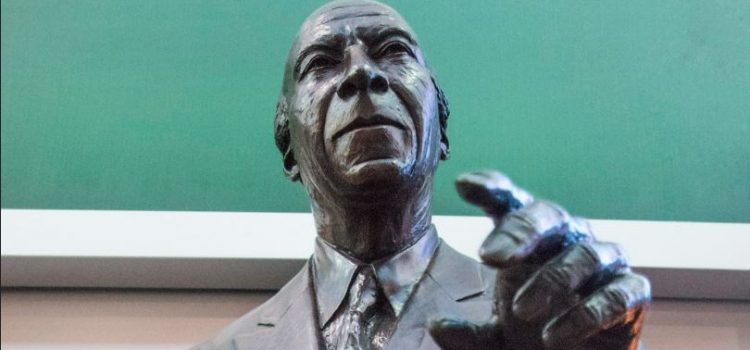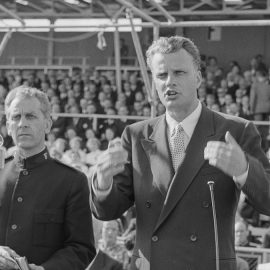

This article is an excerpt from the Shortform book guide to "The Road to Character" by David Brooks. Shortform has the world's best summaries and analyses of books you should be reading.
Like this article? Sign up for a free trial here .
Who was Asa Philip Randolph? What was her contribution to the Civil Rights movement?
Asa Philip Randolph was a major player in the Civil Rights movement. He organized a Black labor union, started the first Black American magazine, advocated for nonviolent resistance, and more. If Randolph hadn’t given up his salary job to advocate for Blacks, the world might not be the same place.
Keep reading to learn about the life of Asa Philip Randolph.
A. Philip Randolph
One of America’s most prominent civil rights activists, Asa Philip Randolph organized the first predominantly Black labor union in 1925. Randolph demonstrated the importance of:
- Cultivating an iron-clad code of moral discipline
- Living a life of quiet dignity and impeccable manners
- Achieving self-mastery over anger and other fleeting emotions
Randolph’s Character Development
Born in Jacksonville, Florida in 1889, A. Philip Randolph learned from his minister father that a person’s behavior was far more important than his skin color. His parents preached the importance of strict posture, formal manners, meticulous speech, and elevated intellectual endeavors. His father and other prominent Black church figures taught him that Black liberation could be achieved through political action and intellectual discourse rather than bloody revolution. The family lived in a time and place of blatant racism, but Randolph was taught to fall back on “gentlemanly conduct” at all times, which meant responding to every slur with civility, humility, and dignity.
As a student, Randolph excelled in academics, sports, and drama. After high school, he moved to New York to become a Shakespearean actor, but in taking college classes he became interested in Karl Marx and socialist ideals. He joined the American Socialist Party and quickly rose through its ranks. By 1917, he and a colleague had started the first Black American magazine, Messenger, which had a socialist agenda. During World War I and the post-war era, he became active in the burgeoning civil rights movement, helping to form the first Black American union. He used his talents in public speaking and his gentle, well-mannered demeanor to advance workers’ rights and battle against racial discrimination in the workplace.
Randolph was a pioneer in advocating nonviolent resistance. In 1940, when President Franklin D. Roosevelt refused to issue an executive order banning discrimination against Black workers in the defense industry, Randolph called for “10,000 loyal Negro American citizens” to march on Washington, D.C. His well-organized plans for a massive nonviolent protest forced Roosevelt’s hand. To prevent the march from happening, the President issued an executive order that put an end to discrimination in the defense industries and government jobs.
Randolph’s Struggles
At age 36, Randolph was asked to lead an effort to organize the Brotherhood of Sleeping Car Porters, the first Black American union. For 12 years, he helped the porters fight for better pay and working conditions. Successful at first, Randolph’s efforts at creating the union nearly ended in disaster during the Depression, when the Pullman Company—the porters’ employer—threatened to fire any employee who voted to strike. Union membership dropped from 7,000 porters to 771.
Randolph gave up his salary and his office and continued to support the fledgling union despite receiving no income and falling into poverty. He turned down a good-paying job with New York City so he could continue his efforts. He rejected financial donations by sympathetic whites, saying that Blacks had to win their victory on their own—which eventually they did.
Randolph went on to advocate for increasing the number of Black Americans in federal jobs and to end military segregation (“Jim Crow” rules). He fought his political battles with genteel reasoning and quiet dignity. His associates often disagreed with his unfailing policy of good manners and politeness, but he persisted. Randolph said he sought not just civil rights for Blacks, but also respect. He did not agree with the revolutionary tactics of the Black Power movement—instead, he believed in the quiet power of sit-ins and prayer protests.
Randolph became the most widely known spokesperson for Black working-class interests in America. Although his name is much less known than Dr. Martin Luther King’s, his work set the standard for the nonviolent protests and civil disobedience of the 1950s and 1960s civil rights movement.
Lessons From Randolph’s Life
- Revolutionary change can take place in a dignified manner. It doesn’t necessarily require raised fists.
- Default to politeness and a reserved demeanor, and you will earn the respect of others.

———End of Preview———
Like what you just read? Read the rest of the world's best book summary and analysis of David Brooks's "The Road to Character" at Shortform .
Here's what you'll find in our full The Road to Character summary :
- How the world has become "me-focused" rather than "we"
- An analysis of eight historical figures who selflessly contributed to the greater good
- A 15-point plan to help you live a more virtuous and happy life






